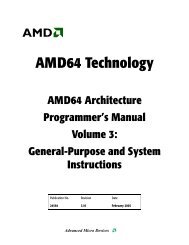Week 3 Section Notes: ARP and Lab 3
Week 3 Section Notes: ARP and Lab 3
Week 3 Section Notes: ARP and Lab 3
You also want an ePaper? Increase the reach of your titles
YUMPU automatically turns print PDFs into web optimized ePapers that Google loves.
Your new Home Insurance policy continuedHome emergency sectionYou automatically benefit from this new section which covers youin the event of a sudden <strong>and</strong> unforeseen incident at your homewhich immediately:• exposes you to a risk to your health;• creates a risk of loss or damage to your home <strong>and</strong>/or any ofthe belongings; or• renders the property unfit for people to live in.Policy numberInsuredEffective dateCover is provided for incidents related to:• Plumbing & drainage• Gas & electrical supply• Security & glazing• Pests• Roofing• Main heating system• Cooking systemThere is no cover when your home has been unoccupied for morethan 60 consecutive days.Boilers or heating systems that have not been properly maintained,inspected or serviced or are over 15 years old are excluded.Page 3 of 3
Question: Is this IP address fixed?
Question: Is this IP address fixed?No. If I plug my computer into an Ethernet jack inBoston, I will receive a different IP than if I pluginto Stanford's network.Why?
Routing●●IP addresses contain information that routersuse to determine how to forward a packet.Basic logic: a router that matches the secondbit of an IP address is “closer” to the destinationthan a router that matches the first bit.
Simplified ExampleAdvertises for:18.243.1.0/30B18.243.1.018.243.1.118.243.1.218.243.1.3ACDefault link:0.0.0.0/0
Simplified ExampleAdvertises for:18.243.1.0/30B18.243.1.018.243.1.118.243.1.218.243.1.3ACDefault link:0.0.0.0/0IP Addr Subnet Next Hop18.243.1.0 255.255.255.252 IP B0.0.0.0 0.0.0.0 IP C
Longest Prefix Match●●Bitwise <strong>and</strong> the packet's destination with allsubnets in the routing table:X i= (Packet Dest IP) & (Subnet i)Forward to next-hop of entry n with largest IPaddress that equals X n.
Simplified ExampleAdvertises for:18.243.1.0/30B18.243.1.018.243.1.118.243.1.218.243.1.3ACDefault link:0.0.0.0/0IP Addr Subnet Next Hop18.243.1.0 255.255.255.252 IP B0.0.0.0 0.0.0.0 IP C
●How do routers know where the next-hop is (IP A<strong>and</strong> IP Bin figure)?
Address Resolution Protocol●Maps next-hop IP address to which link-layeraddress to matches that IP.●Basics. When have next-hop IP address:●●●Check if know corresponding link-layer address.If don't, broadcast on link layer interfaces an <strong>ARP</strong>request for the IP address.Listen for <strong>ARP</strong> responses, <strong>and</strong> route accordingly.
Overview●High-level concepts from the week relevant to<strong>Lab</strong> 3● VNS/Setting up <strong>Lab</strong> 3● Where to start in <strong>Lab</strong> 3●●Advice <strong>and</strong> hintsQuestions
VNS/Setting Up <strong>Lab</strong> 3●Read ALL the instructions before beginning.
VNS/Setting Up <strong>Lab</strong> 3●●●Read ALL the instructions before beginning.You must test <strong>and</strong> your labs on the mythmachines.Copy the auth_key file from/usr/class/cs144/lab3_10au/student_auths//auth_key●to your lab directory
VNS/Setting Up <strong>Lab</strong> 3 ctd.●Create a routing table file. Example is online.0.0.0.0 172.24.74.11 0.0.0.0 eth0192.168.128.204 192.168.128.204 255.255.255.255 eth1192.168.128.206 192.168.128.206 255.255.255.255 eth2PrefixNext hopMaskInterface
VNS/Setting Up <strong>Lab</strong> 3 ctd.●Run the comm<strong>and</strong>./sr -u -T '1-router 2-server' -s vns-2.stanford.edu -r rtable.vrhost -l logname
VNS/Setting Up <strong>Lab</strong> 3 ctd.●Run the comm<strong>and</strong>./sr -u -T '1-router 2-server' -s vns-2.stanford.edu -r rtable.vrhost -l logname●If you see an error that says “unauthorizeduser” ...
VNS/Setting Up <strong>Lab</strong> 3 ctd.●Run the comm<strong>and</strong>./sr -u -T '1-router 2-server' -s vns-2.stanford.edu -r rtable.vrhost -l logname●If you see an error that says “unauthorizeduser” …blame the TA.
Overview●High-level concepts from the week relevant to<strong>Lab</strong> 3● VNS/Setting up <strong>Lab</strong> 3● Where to start in <strong>Lab</strong> 3●●Advice <strong>and</strong> hintsQuestions
<strong>Lab</strong> 3 File Overview●sr_arpcache.h / sr_arpcache.c●H<strong>and</strong>les all the <strong>ARP</strong> messaging alluded topreviously.●sr_router.h / sr_router.c●Where you receive incoming packets.
sr_arpcache●Pseudocode is included in the sr_arpcache.hfile.
sr_arpcache ctd.●●When you receive a packet, you look for thelink-layer address of the next-hop IP.If you don't find it, you:
sr_arpcache ctd.●●When you receive a packet, you look for thelink-layer address of the next-hop IP.If you don't find it, you:●Queue the packet (call arpcache_queuereq).
sr_arpcache ctd.●●When you receive a packet, you look for thelink-layer address of the next-hop IP.If you don't find it, you:●●Queue the packet (call arpcache_queuereq).Broadcast an <strong>ARP</strong> request.
sr_arpcache ctd.●●When you receive a packet, you look for thelink-layer address of the next-hop IP.If you don't find it, you:●●Queue the packet (call arpcache_queuereq).Broadcast an <strong>ARP</strong> request.You get to write this!!!
●Question 1: What layer is <strong>ARP</strong>?●Question 2: When I send a packet on theInternet, does it always get to the destination?
●Question 1: What layer is <strong>ARP</strong>?It's on the Link Layer.●Question 2: When I send a packet on theInternet, does it always get to the destination?No! Remember <strong>Lab</strong>s 1 & 2?
sr_arpcache●sr_arpcache.c has a function calledsr_arpcache_sweepreqs:●●●Called (roughly) every second.If you haven't received a response for your <strong>ARP</strong>request in more than a second, send another...Unless, you've requested 5 times. Then send anICMP error message to all sources.
sr_arpcache: Things you'll have todo.●●●●●Broadcast <strong>ARP</strong> requests.Write sr_arpcache_sweepreqs.Build a data structure tracking outst<strong>and</strong>ing <strong>ARP</strong>requests.Send ICMP error messages when can't findnext-hop router.H<strong>and</strong>le <strong>ARP</strong> responses.
sr_router.c: sr_h<strong>and</strong>lepacket●●Where all packets enter your routerimplementation.Passed in raw Ethernet frames that mayrepresent●●●<strong>ARP</strong> packetsICMP packetsIP packets
sr_router.c: sr_h<strong>and</strong>lepacket●●Where all packets enter your routerimplementation.Passed in raw Ethernet frames that mayrepresent●●<strong>ARP</strong> packetsICMP packets● IP packetsYou will eventually have tosend/generate/modify all of these.
Overview●High-level concepts from the week relevant to<strong>Lab</strong> 3● VNS/Setting up <strong>Lab</strong> 3● Where to start in <strong>Lab</strong> 3●●Advice <strong>and</strong> hintsQuestions
Advice <strong>and</strong> Hints: General●●●●Start the lab early.Read the documentation carefully beforestarting.Check out various packet formats linked to inthe lab (ICMP, Ethernet, etc.).Come to office hours if you have questions.
Advice <strong>and</strong> Hints: Debugging●Use Wireshark! Example../sr -u -T '1-router 2-server' -s vns-2.stanford.edu -r rtable.vrhost -l lognameEnable logging, <strong>and</strong>open logs in wireshark.
But Wait! There's more!●What we went over:●●●Basic concepts.Setting up the lab.Where to start.●There's more:●●Ping <strong>and</strong> traceroute.FTP/HTTP
Extra Questions● Who remembered when I said VNS gave you 8IP addresses? How come there aren't thatmany in the figure?
Extra Questions●What's a multihomed AS?
Extra Questions●Why wouldn't a router always forward a packetto a router advertising a shorter path?
Extra Questions●What is the difference between forwarding <strong>and</strong>routing?
Extra Questions●What is Nagle's algorithm? Why would peopleuse it?
















